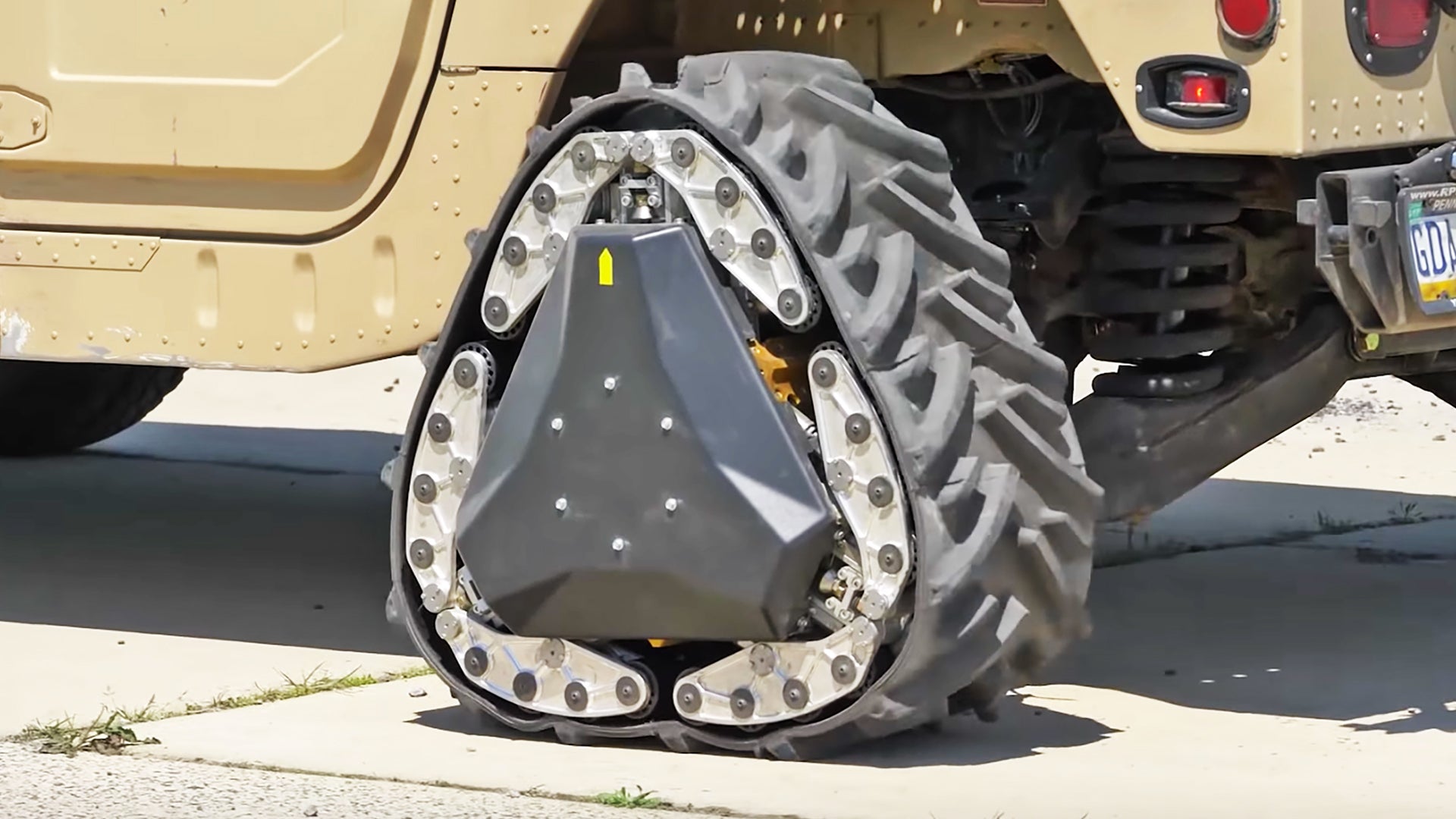It’s one of the biggest trade-offs in mechanized warfare—the efficiency of a wheel or the go-anywhere capability of the track. Wheels are far more adept at speeding over roads and semi-improved surfaces, while tracks own the sand, mud, and snow, as well as crumbling urban surfaces, mediums that can leave even the hardiest wheeled vehicles in a world of hurt. DARPA, along with their partners at Carnegie Mellon University’s National Robotics Engineering Center, have come up with an amazing solution to this problem—a transformer of sorts that can go from wheel to track in two seconds flat.
The Reconfigurable Wheel Tracks initiative has emerged under the Ground X-Vehicle Technologies (GXV-T) program ran by the Pentagon’s famed ‘bleeding-edge’ research and development agency. GXV-T covers a number of technologies and applications, and DARPA describes the program’s aims as “improving mobility, survivability, safety, and effectiveness of future combat vehicles without piling on armor.” According to DARPA, the overall program has the following structure:
GXV-T’s technical goals include the following improvements relative to today’s armored fighting vehicles:
- Reduce vehicle size and weight by 50 percent
- Reduce onboard crew needed to operate vehicle by 50 percent
- Increase vehicle speed by 100 percent
- Access 95 percent of terrain
- Reduce signatures that enable adversaries to detect and engage vehicles
The GXV-T program seeks to develop advanced technologies in the following four technical areas:
- Radically Enhanced Mobility—Ability to traverse diverse off-road terrain, including slopes and various elevations. Capabilities of interest include revolutionary wheel/track and suspension technologies that would enable greater terrain access and faster travel both on- and off-road compared to existing ground vehicles.
- Survivability through Agility—Autonomously avoid incoming threats without harming occupants through technologies that enable, for example, agile motion and active repositioning of armor. Capabilities of interest include vertical and horizontal movement of armor to defeat incoming threats in real time.
- Crew Augmentation—Improved physical and electronically assisted situational awareness for crew and passengers; semi-autonomous driver assistance and automation of key crew functions similar to capabilities found in modern commercial airplane cockpits. Capabilities of interest include high-resolution, 360-degree visualization of data from multiple onboard sensors and technologies to support closed-cockpit vehicle operations.
- Signature Management—Reduction of detectable signatures, including visible, infrared (IR), acoustic and electromagnetic (EM). Capabilities of interest include improved ways to avoid detection and engagement by adversaries.
Phase two of the program’s contract winners recently demonstrated what they have been working on, and this is where Carnegie Mellon’s Reconfigurable Wheel Tracks first appeared.
Check them out in action at time index 2:20 in the video below:

This incredibly innovative and futuristic system is part of Radically Enhanced Mobility portion of the GXV-T program. DARPA describes it and the tracks in a press release, stating:
Radically Enhanced Mobility:
GXV-T envisions future combat vehicles that could traverse up to 95 percent of off-road terrain, including slopes and various elevations. Capabilities include revolutionary wheel-to-track and suspension technologies that would enable access and faster travel both on- and off-road, compared to existing ground vehicles.
Reconfigurable Wheel-Track (RWT):
Wheels permit fast travel on hard surfaces while tracks perform better on soft surfaces. A team from Carnegie Mellon University National Robotics Engineering Center (CMU NREC) demonstrated shape-shifting wheel-track mechanisms that transition from a round wheel to a triangular track and back again while the vehicle is on the move, for instant improvements to tactical mobility and maneuverability on diverse terrains.
Such a capability could be downright revolutionary if it were to make it to an operational state. But just because it works for a technological demonstration, doesn’t mean it is anywhere near being ready for combat operations. Cost, complexity, and durability are all key questions that would have to be answered if the system were to make it into production.
But even if those hurdles remain somewhat steep, such a capability could be worth the headaches they may cause in an operational state for certain users. The USMC in particular, which focuses on executing transitional fights from the beach to inland locales, could make great use of this technology on Humvees and Joint Light Tactical Vehicles (JLTVs). Even larger armored personnel carriers could leverage a form of the technology.
Equipping scout/reconnaissance and special operations vehicles with such a system also makes some sense as they may venture where road conditions are unknown, and with little fire support for protection. Being able to morph between wheels and tracks at an instant, and thus offering high-speed and rugged terrain access flexibility, could literally mean the difference between life and death.

There are also huge applications in the civilian market for this type of concept. Law enforcement, search and rescue, and emergency and disaster response teams could use this capability to plow through terrain that is inaccessible to wheeled vehicles, while still being able to retain a high-speed road capability as well. This could drastically reduce the timeframe for critical mobility operations and for the recovery of wounded personnel. Even farmers could make great use out of the concept.
The thought of such a system becoming a reality, even in just a developmental state, is pretty amazing. This was the stuff of our far-fetched science fiction dreams just years ago. It will be very interesting to see where this technology goes, but it is likely headed somewhere beyond an experiment because the capability is just too sweet not to pursue on a grander level.
Contact the author: Tyler@thedrive.com
